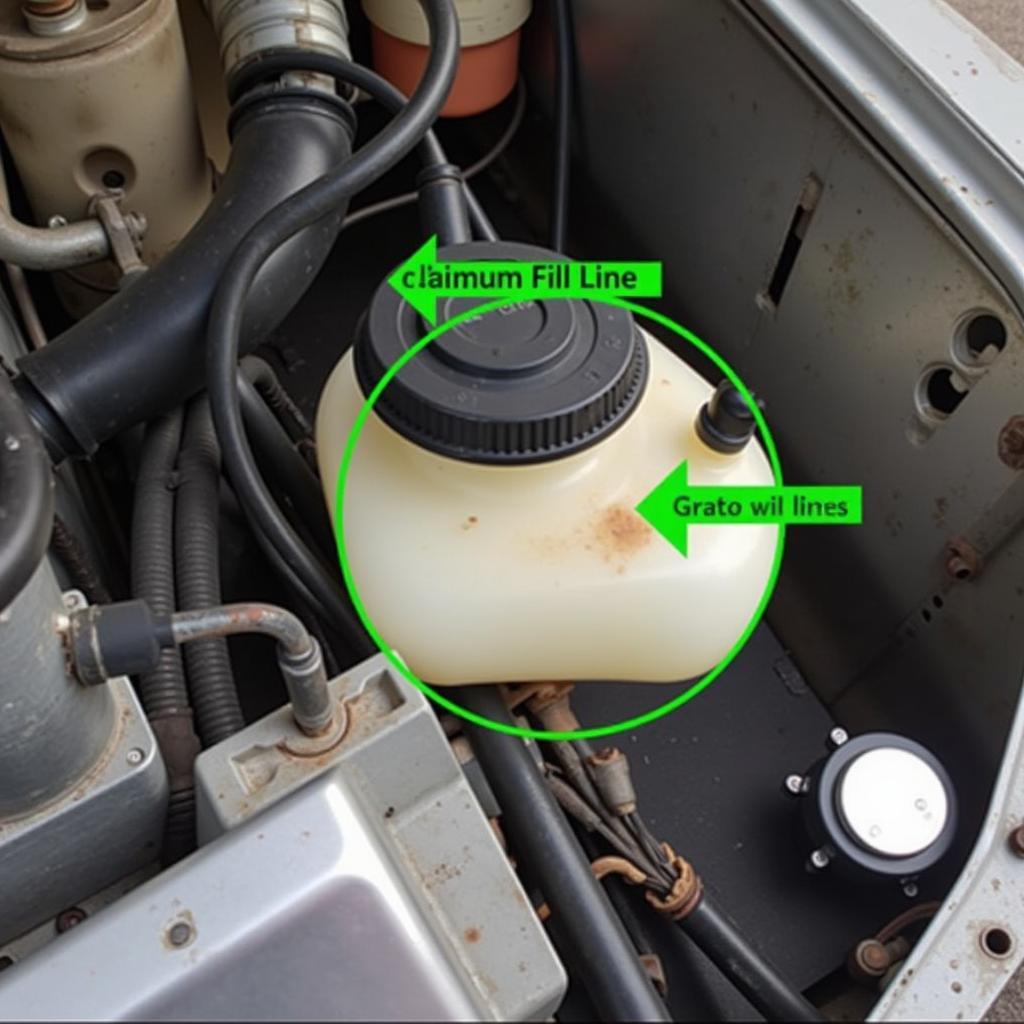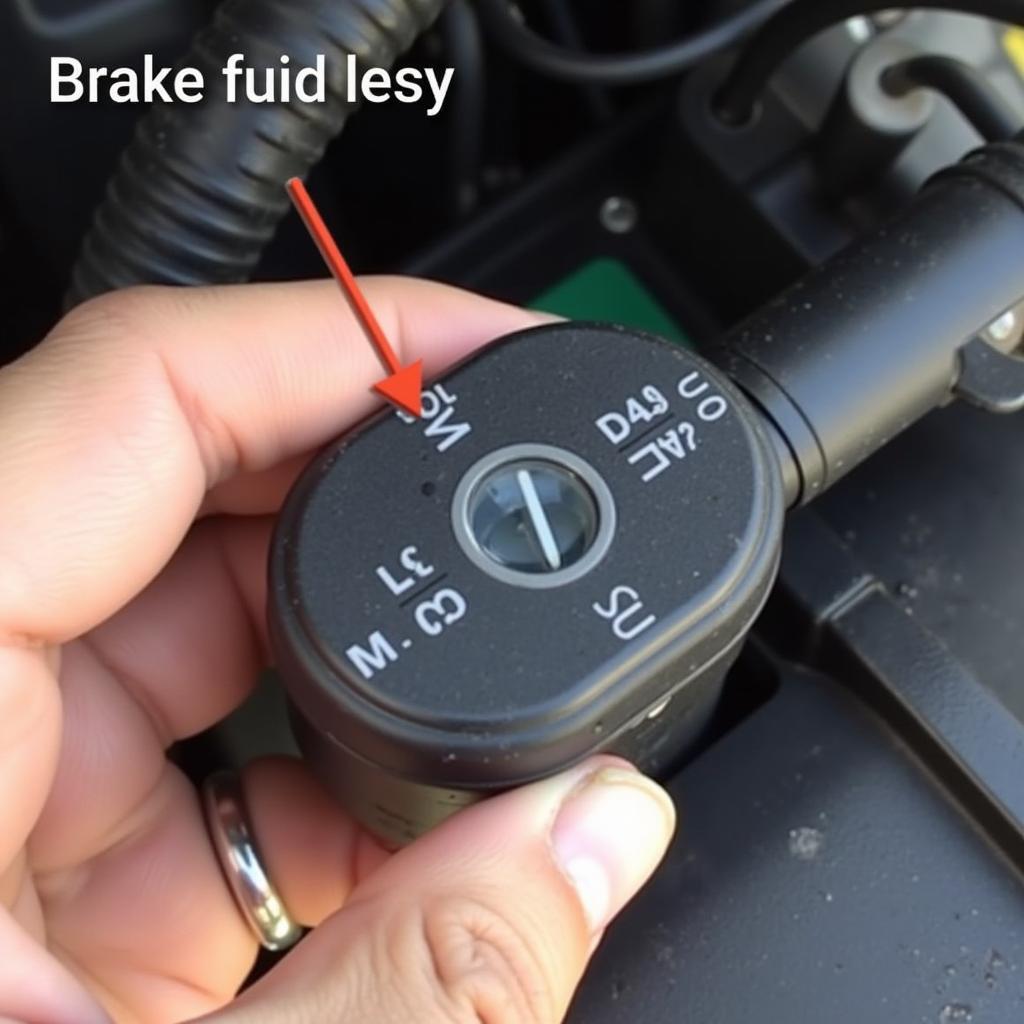The dreaded dual circuit brake warning light on your 78 VW Bus. It’s a sight that can send shivers down any VW enthusiast’s spine. This article will delve into the intricacies of this common issue, providing you with practical troubleshooting steps and expert advice to get your 78 VW Bus back on the road safely.
Understanding the Dual Circuit Brake System in Your 78 VW Bus
The dual circuit brake system is a crucial safety feature designed to provide redundancy in case of failure. It divides your braking system into two separate circuits, ensuring that if one circuit fails, you still have some braking power. The 78 vw bus dual circuit brake warning light illuminates when there’s an issue within either circuit, a low brake fluid level, or a problem with the pressure differential switch.
Why is My 78 VW Bus Dual Circuit Brake Warning Light On?
Several factors can trigger the dual circuit brake warning light. These include:
- Low brake fluid: This is the most common cause. Check your brake fluid reservoir immediately.
- Worn brake pads or shoes: Thin brake pads require more fluid to engage, triggering the warning light.
- Leaking brake lines or calipers: Leaks within the system reduce fluid pressure, illuminating the light.
- Faulty pressure differential switch: This switch detects pressure imbalances between the two circuits. A malfunction can cause a false positive.
- Air in the brake lines: Air in the lines reduces braking efficiency and can trigger the warning light.
 78 VW Bus Brake Fluid Reservoir Check
78 VW Bus Brake Fluid Reservoir Check
Troubleshooting the 78 VW Bus Dual Circuit Brake Warning Light
Here’s a step-by-step guide to help you diagnose and fix the problem:
- Check the brake fluid level: Top off the fluid if it’s low. If the light remains on, proceed to the next step.
- Inspect for leaks: Carefully examine all brake lines, calipers, and wheel cylinders for any signs of leakage. Look for wet spots or fluid dripping.
- Check brake pads and shoes: Measure the thickness of your brake pads and shoes. Replace them if they’re worn beyond the recommended limit.
- Test the pressure differential switch: This requires specialized tools and knowledge. Consult a qualified mechanic if you’re unsure.
- Bleed the brakes: Air in the brake lines can mimic a leak. Bleeding the brakes removes trapped air, restoring proper function.
What if the Light Stays On After These Steps?
If you’ve followed the above steps and the 78 vw bus dual circuit brake warning light is still on, it’s crucial to consult a qualified VW mechanic. Further diagnostics might be needed to pinpoint the exact cause.
“A persistent brake warning light is never something to ignore,” says veteran VW mechanic, Hans Gruber. “It’s a clear indication that something isn’t right with your braking system, and delaying repairs can compromise your safety.”
Preventing Future Brake Issues in Your 78 VW Bus
Regular maintenance is key to preventing future brake problems. Here are some tips:
- Regular brake fluid flushes: Brake fluid absorbs moisture over time, reducing its effectiveness. Flush your brake fluid every two years or as recommended by your vehicle’s service manual.
- Inspect brake components regularly: Check your brake pads, shoes, lines, and calipers for wear and damage at least every six months.
- Address any brake issues promptly: Don’t ignore squeaking brakes or other unusual sounds. Early intervention can prevent minor issues from escalating into major problems.
Conclusion
The 78 vw bus dual circuit brake warning light is a crucial safety feature. Addressing the issue promptly can prevent further damage and ensure your safety on the road. By following the steps outlined in this article and seeking professional help when necessary, you can keep your vintage VW Bus running smoothly and safely for years to come. Don’t delay, prioritize your safety and get that warning light checked out today.
“Preventive maintenance is the best way to keep your VW Bus’s brakes in top shape,” adds Hans Gruber. “Regular checks and timely repairs can save you time, money, and potential headaches down the road.”
FAQ
- Can I drive my 78 VW Bus with the brake warning light on? It’s highly discouraged. A lit brake warning light indicates a potential problem with your braking system, putting your safety at risk.
- How much does it cost to fix a dual circuit brake issue? The cost varies depending on the underlying cause. A simple brake fluid top-up is inexpensive, while more complex repairs, like replacing brake lines or calipers, can be more costly.
- How often should I check my brake fluid level? It’s a good practice to check your brake fluid level at least once a month.
- Where is the pressure differential switch located on a 78 VW Bus? It’s typically located near the master cylinder.
- What tools do I need to bleed my brakes? You’ll need a brake bleeder wrench, a clear plastic tube, and a container to collect the old brake fluid.
- Can a faulty brake light switch trigger the dual circuit warning light? No, the brake light switch and the dual circuit warning light are separate systems.
- Is it safe to drive with a leaky brake line? Absolutely not. A leaky brake line compromises your braking ability, making it extremely dangerous to drive.


